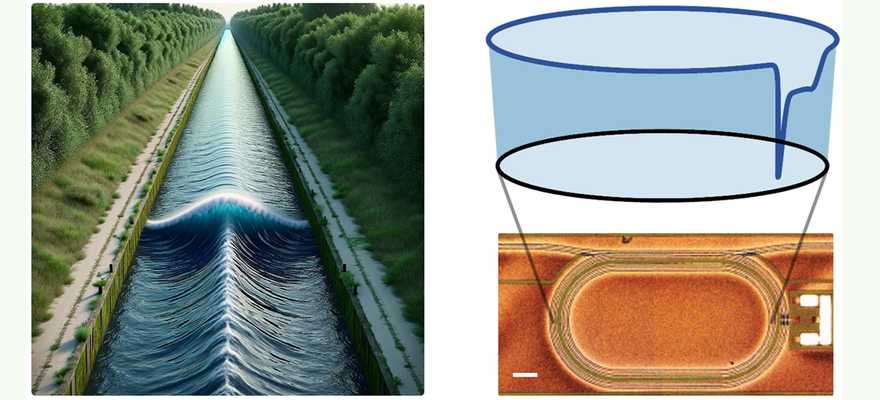Técnico Professor Co-Develops Innovative Soliton Laser Technology
Published on Jan. 25, 2024, 11:25 a.m.

Imagine a beam of light that keeps its shape as it travels, like a solitary wave on water. Scientists from an international group, involving TU Wien, Harvard, Técnico Lisboa and Italian research institutes, have miniaturized soliton lasers into tiny chip-scale rings, with the potential to transform areas from environmental sensing to spectroscopy.
The research was published in Nature, the world's leading multidisciplinary scientific journal. This innovation harks back to 1834, when John Russell observed a “translation wave” in a canal, a solitary wave of water that traveled for miles unchanged. The modern equivalent is a soliton wave of light circulating in a laser cavity. Soliton lasers, known for generating ultrashort pulses of light, have existed in desktop systems such as fibers, but they are usually bulky. The research team's discovery has miniaturized soliton lasers into microscopic rings, with completely new applications in a compact form. The light pulses that appear in these lasers are similar to a 'dip' in the light flux - a dark pulse. This unique light structure was theorized by the Japanese physicists Nozaki and Bekki in the context of the famous Ginzburg Landau equation. However, such phenomena have been elusive, observed mainly in fluids and chemical systems, until now. “When we started exploring these semiconductor ring lasers in 2020, we observed interesting physics, such as a form of optical turbulence, but the idea of creating solitary pulses in these cavities seemed unlikely. This breakthrough not only miniaturizes the solitons, but also makes it possible to extract them efficiently from the cavity, thanks to an active gate we designed, coupled to the ring,” said Marco Piccardo, professor at Técnico and co-supervisor of the study.
The architecture of the coupler is detailed in a complementary article now in Nature Communications. N. Opacak et al, “Nozaki-Bekki solitons in semiconductor lasers”, Nature (2024)
article